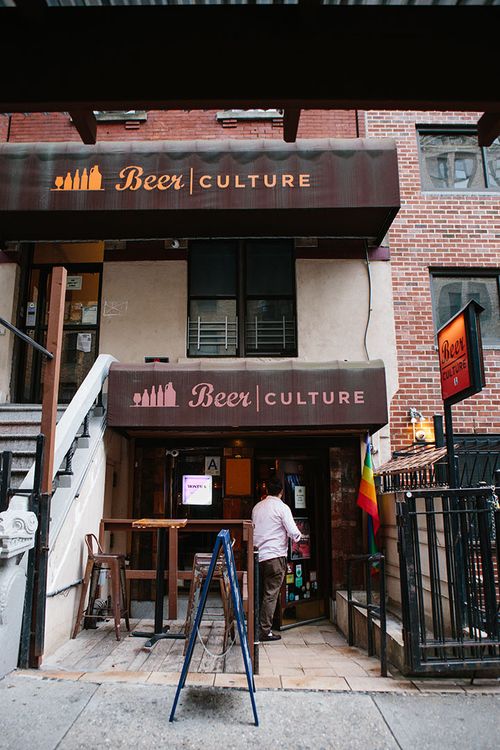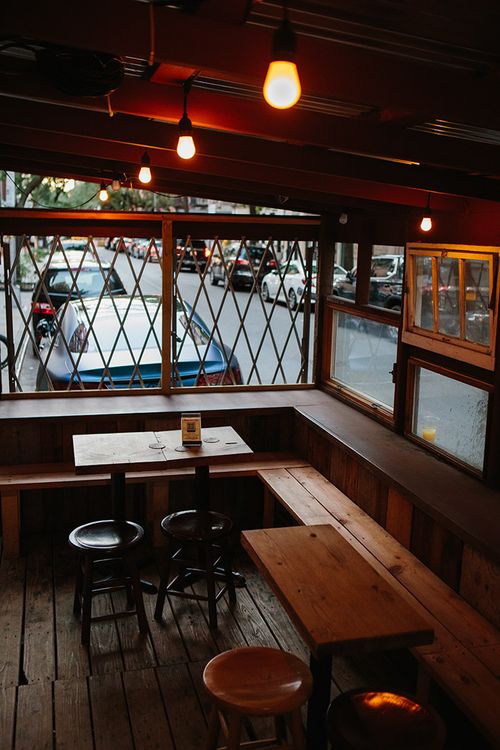In 2013, Ted Morgan opened the doors at Beer Culture, a beer emporium with two outposts in Manhattan. It’s no small risk opening a new bar or restaurant in New York City. A new business of the kind opens, on average, every day in the city. But a staggering 80 percent close within five years. Despite the prospects, Morgan knew he had something good.
A self-described “beer nerd,” Morgan has been a beer hobbyist from the time of his first drink — which, he’s careful to mention, did not happen until he was well over the legal age. Morgan’s journey from being a simple appreciator of good beer, something not always welcome in Christian circles, to owning two bars in the high-stakes New York City restaurant scene is a story of marked interest in an age-old pastime.
This is age-old, by the way, in the range of thousands of years, not hundreds. A song written by an ancient Sumerian in southern Mesopotamia called the “Hymn to Ninkasi” was etched on a rock in approximately 1800 BC. The etching also included a recipe for making beer. Some scholars think the Ninkasi hymn was popular even a thousand years earlier than 1800 BC, and evidence exists that beer was consumed in Mesopotamia (modern day Iraq) as far back as 7,000 years ago. By almost any measure, beer is one of the oldest drinks humans have produced, and its production and consumption have even been credited as building blocks for human civilization.
Morgan is one of many who keep this tradition alive — he’s always had an interest in craft beer. When traveling, he would taste expensive international brews, increasing his curiosity in what makes a beer different and what makes a beer good. “I was never one who liked sweets,” Morgan explained to me when we chatted about the history of his interest in beer. “I liked salty, savory, even bitter. Beer appeals to all of that.”

For the people (and the beer)
Morgan initially moved to New York City to attend Columbia University, where he studied mechanical engineering. In this early part of his time in NYC, Morgan began attending a new and fledgling church. The services were vibrant, and the preaching — particularly about the importance of Christians in the marketplace — spoke to this young professional whose career was on the fast track. After 13 years in technical and management positions with one consulting firm, much of that spent working with large capital markets clients, Morgan joined another firm as chief operating officer. His personal life also flourished — he and his wife, Diane, had three children. His hobby began to flourish, too.
Often a visitor of beer gardens and specialized bars that carried exotic and rare brands, Morgan began hosting “salons” in the backyard of his townhouse in Upper West Side, inviting friends over to discuss specific topics and taste a wide selection of craft beers.
“I probably did the salons for 12 years,” he recalled. “It wasn’t necessarily a small group or community group. We’d just discuss Christian topics, and I’d offer 10 to 12 brands I’d recently been introduced to. It was such a good time — the salons brought a lot of disparate people together, we had lots of lively discussions, and everyone always really enjoyed themselves.”
As Morgan’s interest in craft beer grew, so did his frustration that there weren’t more bars or restaurants in Manhattan that featured the kind of unique, quality drinks he enjoyed. In fact, he found only three. He met Matt Gebhard, manager of a local high-end beer bar, and over (no surprise) a beer, they discussed what they saw as the void in Manhattan’s landscape. And they decided to start their own craft beer bar.
“We’re beer nerds, not beer snobs,” Gebhard would say.
So they envisioned a destination for “beer nerds” like themselves. The interior aesthetic and overall concept were discussed at length, as they wanted a space in which serious craft-beer lovers would feel comfortable: “Dark wood, exposed brick, a wall of see-through, glass-door coolers filled with various brands of carefully curated beer. A setup that would entice beer lovers to try several different varieties,” Morgan said.
The venture took a bit of capital, plus a lot of courage when the capital almost didn’t come through. Remember, 80 percent of new bars or restaurants in NYC close within five years. Morgan approached investors who routinely turned him down, unwilling to take that risk. He wound up deciding to be the primary and almost sole investor. Gebhard’s role would be to manage the day-to-day operations, earning an ownership stake over time.

Confident that their beer bar would fill a niche corner in the market, Morgan and Gebhard found the perfect location in the Hell’s Kitchen neighborhood, just west of Times Square, and hired an architect to carry out the vision.
An (un)expected hurdle
From the goodness of community and conversation over a carefully crafted drink, the plans for Beer Culture grew. But as Morgan’s dream grew closer and closer to reality, he received some backlash from personal connections in the Christian community, particularly those outside of the city. These connections found fault with Morgan’s opening a new bar in a city that already had an overabundance, not to mention a long history of hard drinking and cases of public drunkenness. And it’s no secret that many people in and outside New York suffer various consequences of alcohol abuse.
Morgan had consider whether it was wise to move forward.





